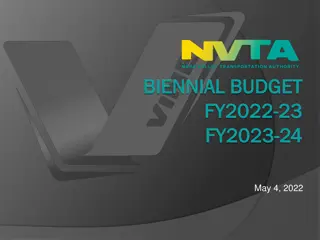Year-End Closing Checklist for School Fiscal Services
Review key areas such as tax revenue, grants, grant revenue, lease rental fund revenue, accruals, deferred outflow, liabilities, and deferred inflow to properly prepare for the year-end closing in school fiscal services. Ensure accuracy in financial records and compliance with regulations for a smooth transition into the new fiscal period.
Download Presentation

Please find below an Image/Link to download the presentation.
The content on the website is provided AS IS for your information and personal use only. It may not be sold, licensed, or shared on other websites without obtaining consent from the author.If you encounter any issues during the download, it is possible that the publisher has removed the file from their server.
You are allowed to download the files provided on this website for personal or commercial use, subject to the condition that they are used lawfully. All files are the property of their respective owners.
The content on the website is provided AS IS for your information and personal use only. It may not be sold, licensed, or shared on other websites without obtaining consent from the author.
E N D
Presentation Transcript
PREPARING FOR YEAR-END CLOSING School Fiscal Services, OPI
ITEMS TO REVIEW FOR YEAR-END Revenues Expenses Reconciliations Other Misc. Items
TAX REVENUE Review tax revenue and compare to budgeted amount. Have you received what you expected? Your County Treasurer will provide you the amount of Taxes Receivable. Make sure it matches your records. Protested taxes-Are they coded correctly? 1117-Prior Year Protested/Delinquent Taxes 1118-Dept. of Revenue Tax Audit Receipts
GRANTS Do you have any grant money that must be spent before June 30th? Make sure that expenses charged to grants are allowable in that grant. Do you have eligible general fund expenses that could be transferred to the grant? Have you charged indirect costs where allowed?
GRANT REVENUE Review grant revenue. Ensure that Expenses/Revenues match. Cash requests have been submitted. Closing reports are ready to be prepared. Do you need to accrue or defer any revenue? Are you within the allowable guidelines for carry-over?
LEASE RENTAL FUND REVENUE Check balance in Fund 20-not exceeding allowable balance. MCA 20-9-509, $10,000 EL/HS or $20,000 K-12. Plan to spend or transfer any excess so that your ending balance is within the limit.
ACCRUALS Due to/Due from Does anyone owe you money? Do you owe anyone money? Receivable for any revenue Payable for any expenses Prepaids? Is it a material amount?
Deferred Outflow (21) 501 Consumption of assets by government that are applicable to a future reporting period. Liabilities (22) 601-606 Amounts owed by the reporting school district to another governmental unit. These amounts may represent grants-in-aid, shared taxes, taxes collected by the reporting unit for another unit, loans, and charges for services rendered to the reporting district by another governmental entity. Deferred Inflow (36) 680 The deferred inflow account is used to account for amounts which have met asset recognition criteria but not revenue recognition criteria of measurable and available. Under modified accrual accounting, taxes receivable less allowances for uncollectible taxes are offset by crediting the deferred inflow account for the same amount. Rent or fees received in advance and long-term receivables such as the lease-sale of a building are other examples of deferred inflow.
REVIEWING EXPENSES Pay only for supplies and services purchased on or before June 30th out of the current fiscal year funds or encumber funds for valid contracts or other expenses. Treat any exceptions consistently every year. Consider utility payments, travel and conferences, summer school payroll, etc.
ENCUMBRANCES June 30th is the last day to obligate funds to the current fiscal year. Must have a valid contract or purchase order to create an encumbrance. Must have sufficient funds and budget authority available to cover the encumbrance.
PURCHASING Set your purchasing deadline early enough to receive invoices and issue payments for all items received by June 30th. If you have the item in your possession on or before June 30th, payment must be issued in the current fiscal year. If the item is received on July 1st or later, payment must be issued in the new fiscal year unless encumbered.
PAYROLL Generally - Payment should be made in the same year the hours were worked. Prepare quarterly taxes and issue payments on or before June 30th. Submit retirement payments by the deadline. Payroll clearing account should zero out at year-end.
RECONCILE cash to the County Treasurer, student activity accounts, payroll clearing account, any other separate bank accounts, general ledger clearing or trust accounts. Review Trial Balances and have ready for audit. Prior Year-End Journals All Cleared
REPORTS Compensation Expenditure Report- You can enter TOE records for new employees anytime between now and December 10th. Enter any journals needed to correct invalid entries for TFS.
FIXED ASSETS Check expenses coded to object 7XX. Add new fixed assets to your list. Delete any assets that were sold or disposed of during the year.
DEPRECIATION Which method of depreciation will you be using? Straight line-Considers asset s life and cost Units of production-Production number and cost Declining balance-used with equipment and assets that always decline in value over time. Sum of the year digits-Useful asset years
BUDGET Compare budget to actuals in all budgeted funds. Is anything overspent? Review local revenue sources and interest income. June 30th is the last day that OPI can accept and process budget amendments.
SPECIAL EDUCATION Double check program 280 expenses. Do you have enough expenses to meet maintenance of effort requirements? Reversion?
TRANSPORTATION Transportation Transfer Provision - In Effect for FY 2018 2021 - SB 02, section 10 requires districts transfer budgeted and non-budgeted funds to the transportation fund to eliminate any increase in school district property taxes that would otherwise be caused by Senate Bill 2. This can be accomplished by reducing transportation spending, covering the lost state revenue from transportation fund reserves, or transferring budgeted and/or non-budgeted funds to the transportation fund. The maximum amount allowed to transfer is equivalent to the shortages associated with the transportation block grant reduction and state transportation appropriation reduction. (Districts cannot transfer from the debt service fund or retirement fund.) All completed contracts for the new year to county superintendent by July 1st.
TUITION District of residence pays remaining tuition and transportation obligations by June 15th. Please get these mailed out in time to process at the receiving district.
MOST COMMON CALLS Balance Sheet doesn t match revenue and expenditures Line 52. New step to verify that Facilities Condition Inventory Report has been completed.























